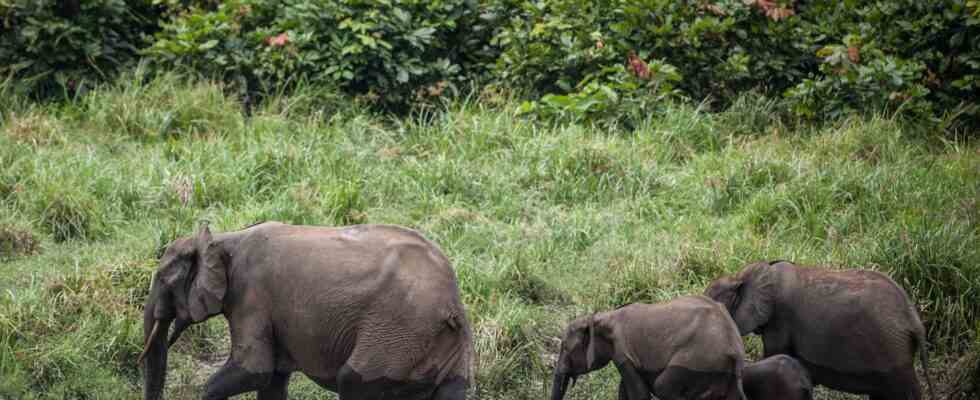Status: 11/25/2022 10:35 a.m
Dozens of shark and ray species under protection, trade bans on rhinoceros and ivory – the CITES species protection conference has made far-reaching decisions. Environmentalists are excited.
He is hunted for his precious ivory tusks: the forest elephant is in danger. Because of poaching and habitat loss, it is on the red list of endangered species in the highest of three endangerment levels. According to the WWF, 20,000 elephants are poached in Africa every year. While four African countries wanted to put all their elephant populations under the strictest protection, others called for trade to be opened up. The application was rejected, commercial international trade remains prohibited.
Elephants help the climate
The spokeswoman for the environmental organization WWF, Rebecca Gehrig, welcomes the decision. Any loosening would be counterproductive. The forest elephant is a kind of “gardener of the forest,” she explains. “That means it ensures that grass and bushes stay smaller.” As a result, trees would have more light and more nutrients to grow and could therefore store more CO2.
At the same time, however, it is becoming increasingly dry, which means that the animals have problems finding food. “So they are threatened by this, but also by poaching, for example. This in turn means that they can no longer keep the forests in such a way that they store a lot of CO2. This is a cycle that is getting worse and worse.”
“Goosebumps” at the decision for more protection of sharks
A milestone was set for the protection of sharks at the CITES international species protection conference in Panama City. They are hunted for their fins and meat. However, they often end up in the net as by-catch. The population of almost all oceanic sharks has declined by more than 70 percent in the last 50 years.
The new protection status is a huge success, says Gehrig. “I think we all had goosebumps when we made the decision,” she says. “It has been advocated for three entire families of sharks and rays to be placed under the protection of CITES.” They may continue to be traded, but only if this trade does not endanger stocks. “And that’s a giant leap for these marine animals. Before the conference, only about 20 percent of all shark and ray species traded and were under the protection of CITES. Now it’s 90.” That is tremendous progress.
Biodiversity against the climate crisis
The president of the fisheries association in Spain, Javier Granat, is not enthusiastic about this decision. The preservation of biodiversity is essential, he emphasizes, “but the aspect that ecologists forget is that it is not just about mere protection, but also about jobs, the generation of wealth and that people have something to do with it have food on the table.”
Today the International Conference on Endangered Species comes to an end. For WWF spokeswoman Gehrig it was a success. The climate crisis can only be stopped with a wide variety of species.
More protection for endangered species? A summary of the species protection conference in Panama
Anne Demmer, ARD Mexico City, November 25, 2022 10:35 a.m

